If you’ve spent any time exploring Rome’s classical sites, you may think with great confidence that you’ve seen everything there is to be seen in the Eternal City. But think again. For starters, look down. We’ve discovered another side of Rome—a hidden Rome that is brimming with antiquity.
The rub, though, is that you have to know where to look. Of course, the best way to go about that is to join a guided walking tour of Rome’s catacombs, which leads you and a small-group of other travelers into the depths of hidden Rome, an underground world where you’ll explore the city’s most fascinating chambers and passages, time traveling into the past with each step down.
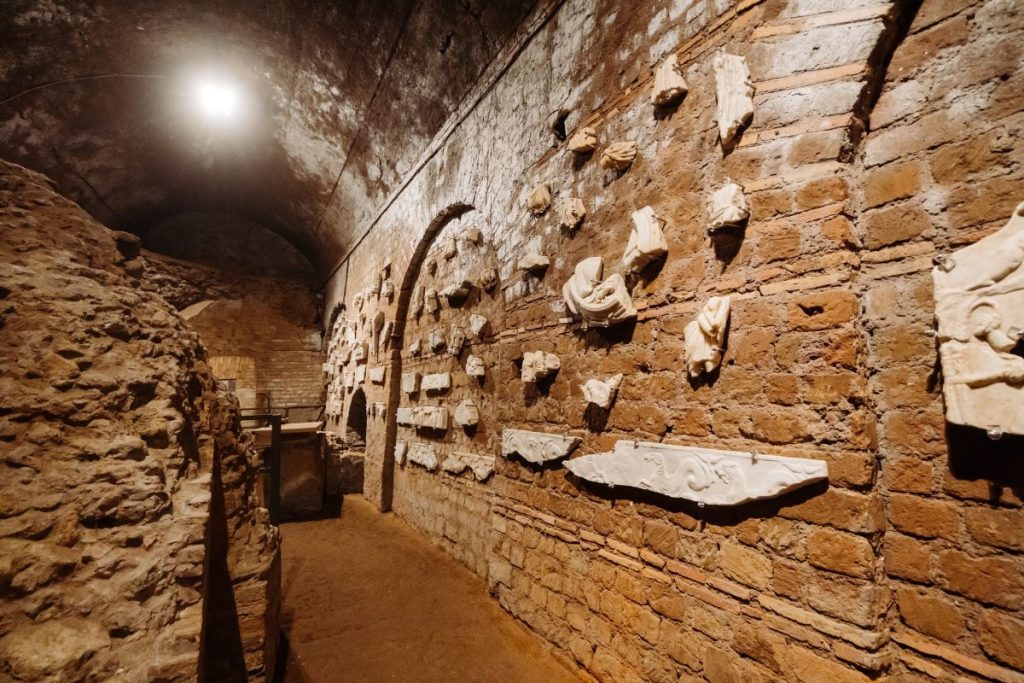
What You’ll See on a Guided Tour of Rome’s Hidden and Ancient Sites
You’ll be whisked away from the bustling ancient metropolis and taken to a more tranquil side of what we love to call hidden Rome. The Appian Way is the most bucolic slice of the Eternal City, where umbrella pine trees and two-thousand-year-old stone funerary monuments dot the landscape.
You’ll get an up close and personal look at the Mausoleum of Cecilia Metella and hear the fascinating stories behind this monument, as well as, the incredible aqueducts that are still beautifully preserved. You’ll also get to descend into a catacomb, home to the early Christian martyrs and the people who venerated them. The fascinating details below are just a small taste of what you’ll learn on a guided tour.
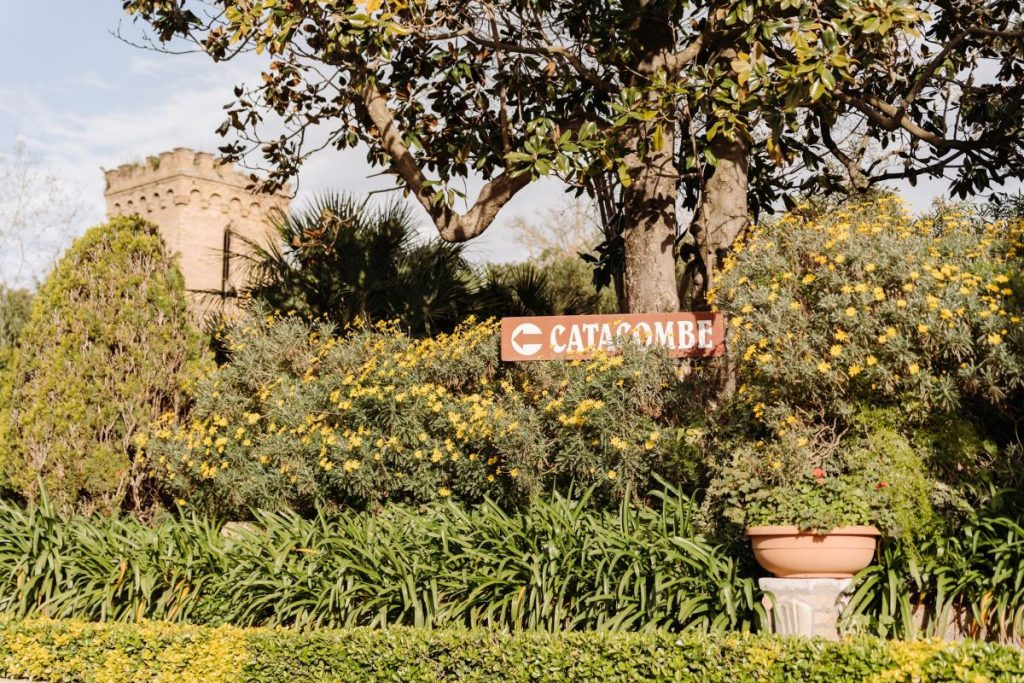
Traveler’s tip: Want to see Rome, but are limited on time? We’ve got you covered with our tips on how to spend 24 hours in Rome.
The Queen of Roads
The Roman road system was one of the marvels of the ancient world. And the Appian Way – or, as the locals call it, the Appia Antica – was once a super highway, stretching from the capital all the way to the “heel” of the boot (to the town of Brindisi). The section of “The Queen of Roads,” as it’s nicknamed, that lies just outside of Rome is now a 6,000 acre public park and one of the best off-of-the-radar sites of the Eternal City.
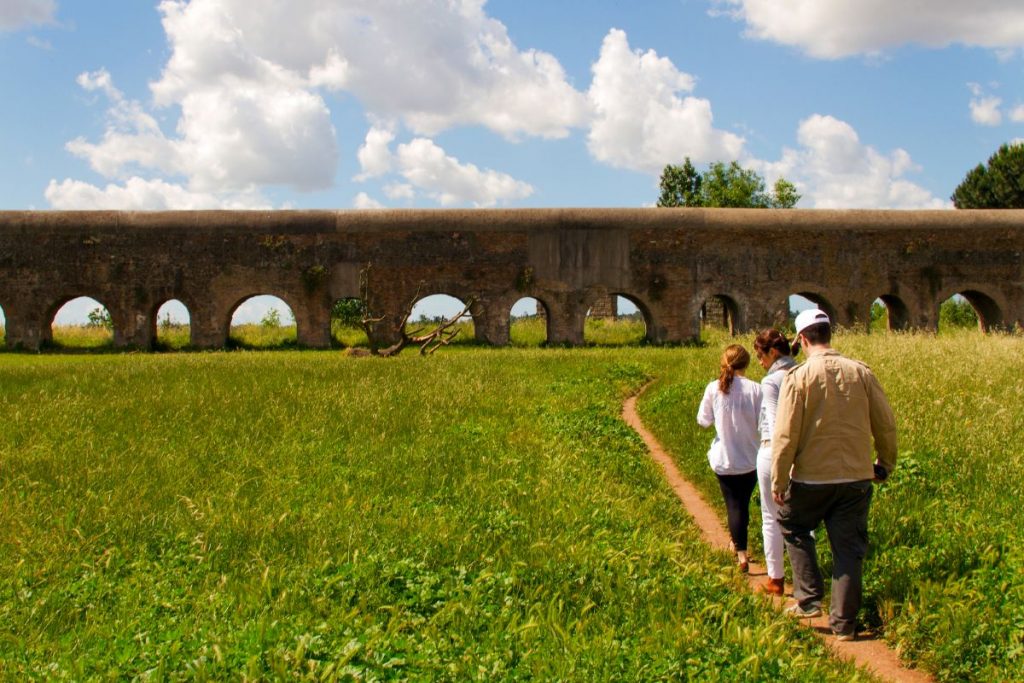
The road begins at the third-century A.D. Aurelian Walls and the Gate of San Sebastian and then is quickly met with ancient Christian catacombs. A bucolic treat is in store for those who keep wandering, as the brick-sized cobblestones give way to large irregularly shaped stones, complete with ruts made from centuries of chariots moving up and down the road.
Crumbling millennia-old mausoleums and shady umbrella pines flank the road, which is completely traffic free on Sundays. Remnants of mosaic-floored villas and stadiums line the road and make for a perfect excuse for a breather. And, of course, on a guided tour of Rome’s underground, expect to be wowed by your guide’s tales of what life was like on the Appian Way 2,000 years ago.
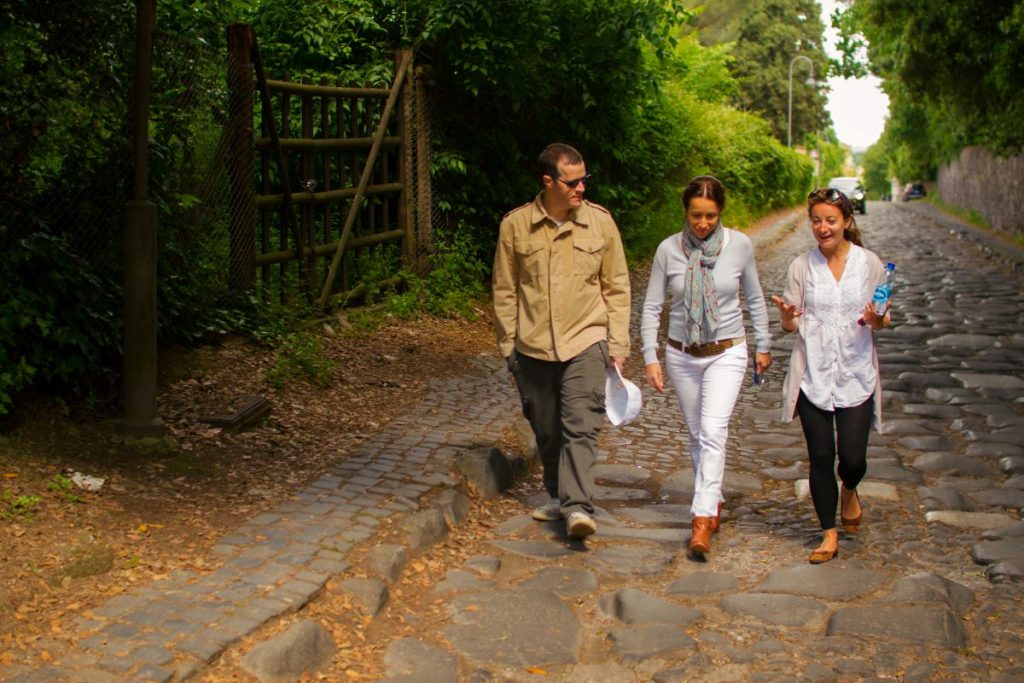
One fun note to look out for: The Appian Way is one of the most fashionable places in Rome to live these days. The villas tucked away just off the ancient road are owned by the rich and famous, including designers Valentino and Armani.
Mausoleum of Cecilia Metella
This three-floor cylindrical lava rock structure is the tomb of Cecilia Metella, a first-century BCE aristocrat, who was the wife of Marcus Licinius Crassus, who served under Julius Caesar. The tomb was built sometime between 30 and 10 BCE
It looks very different today because in in the first few years of the 14th century, another aristocratic family, the Caetani, transformed the tomb. They bought the land around the structure and then turned it into a larger fortress, complete with horse stables, warehouses, living quarters, and a church.
Inside the tomb/medieval fortress today is the Museum of the Appian Way, which displays millennia-old statues, relief sculptures, and funerary monuments that once flanked the Appian Way.
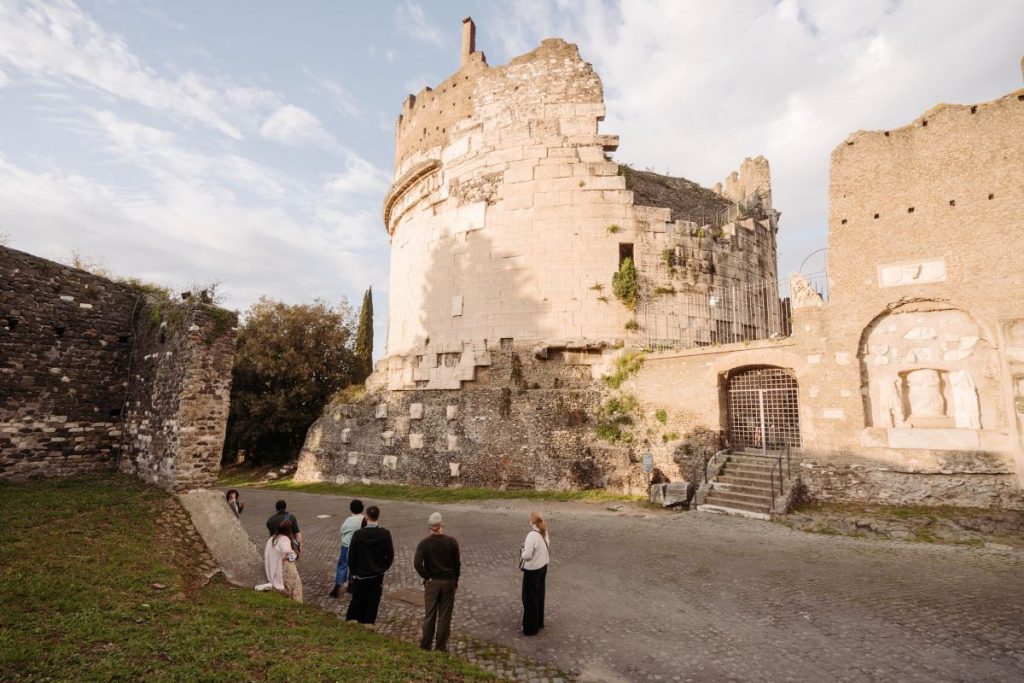
Catacombs of St. Sebastian
Most of the famed catacombs where early Christians worshipped in secret are located near the Appian Way. The reason is because this is where they buried the dead—cemeteries always had to be located outside the city—and because no one was enforcing the followers of this new cult to obey by the pagan religion.
The word “catacombs” possibly is derived from Latin for “cata tumbas,” “among the tombs,” or perhaps the Greek words, “kata” and “kymbe,” which when combined means “close to the cavity.” Whatever the case, the Appian Way is flanked by ancient catacombs where early martyrs were buried and the faithful would come to venerate these early Christian heroes in secret.
One of the largest catacombs here is that of San Sebastian. You can descend underground and walk along the ancient subterranean passageways and see where the devout would clandestinely worship. Many of the bones of the people entombed here are long gone. Thanks to the medieval relics craze, relic salesmen would often raid the tombs, hoping to fetch a bone of an early sanctified martyr, so they could sell it on the relics market for a heavenly sum. So that you know what you’re looking at when you’re wondering the catacombs and you can learn more great tales and anecdotes about these unique sites, consider an expertly led tour of Rome’s Catacombs.
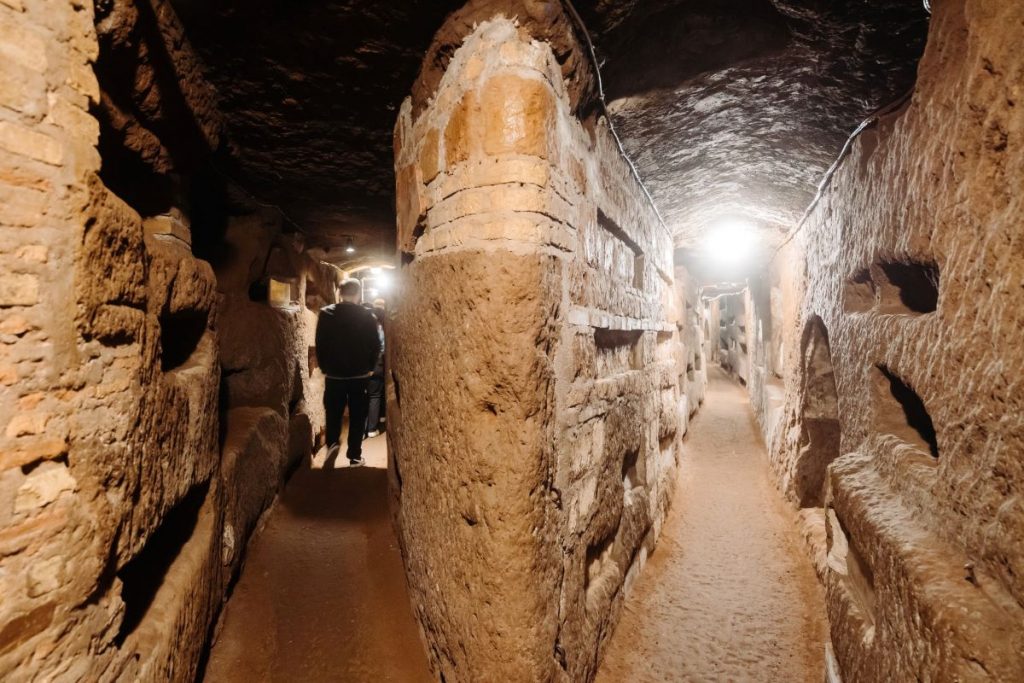
Parco degli Acquedotti
This swath of the Roman countryside, not far from the Appian Way, is lined with ancient Roman aqueducts that sit relatively intact like ghostly reminders of how advanced Roman society actually was. The two aqueducts—the acque Claudia and the Anio Novus—date from the first half of the first century A.D. and carried water into the center of Rome and the hills around Tivoli. In fact, they carried over a third of the water supply of Imperial Rome, over 250 gallons of water per person, per day. Today the park makes for a quiet stroll and an up-close look at an ancient engineering marvel.
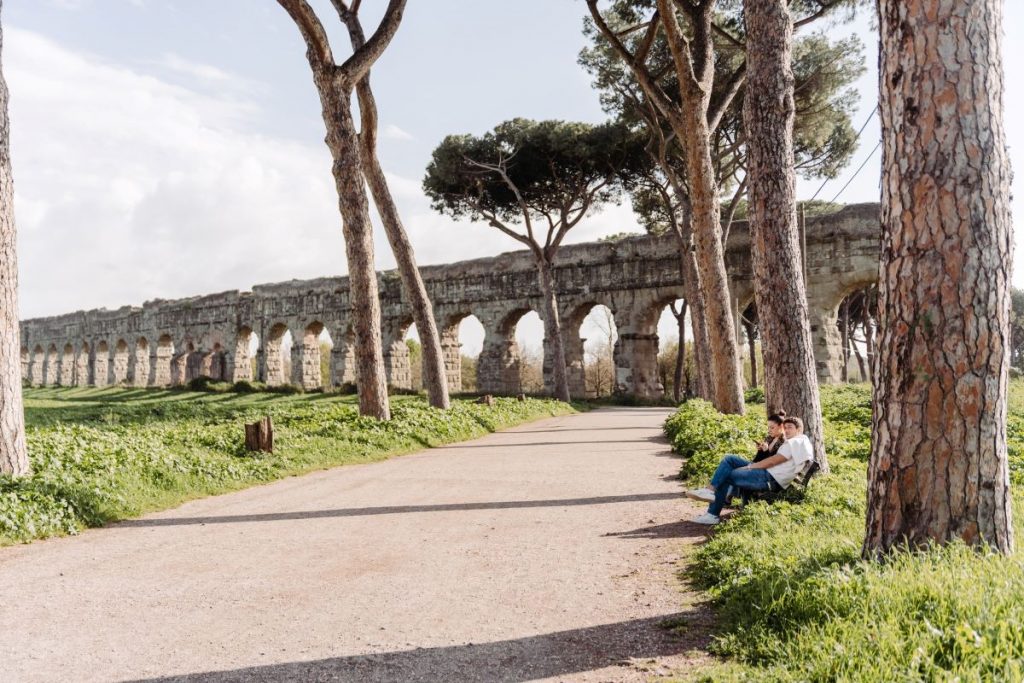
Hidden Rome FAQs
1. Why were the catacombs located outside the city of Rome?
In ancient Rome, burial within the city walls was prohibited for sanitary and religious reasons. This led to the creation of vast underground cemeteries, or catacombs, just outside the city, especially along major roads like the Appian Way.
2. What was the purpose of Roman aqueducts, and how did they work?
Roman aqueducts were built to transport fresh water from distant sources into cities and towns using a precise system of gravity-fed channels. Structures like the Acqua Claudia and Anio Novus brought millions of gallons of water daily to supply baths, fountains, households, and public latrines.
3. Who was Cecilia Metella, and why is her mausoleum significant?
Cecilia Metella was a noblewoman from a powerful Roman family in the 1st century BCE. Her tomb on the Appian Way became a symbol of elite Roman architecture and status. Later, it was transformed into a medieval fortress, reflecting centuries of Roman and post-Roman history in one iconic structure.
Ready to uncover hidden Rome’s best-kept secrets? Well, step off the beaten path and journey through ancient aqueducts, catacombs, and the legendary Appian Way. Don’t just visit Rome—experience it. Reserve your spot on a small-group guided tour of Rome’s catacombs and walk through 2,000 years of Rome’s hidden history.
